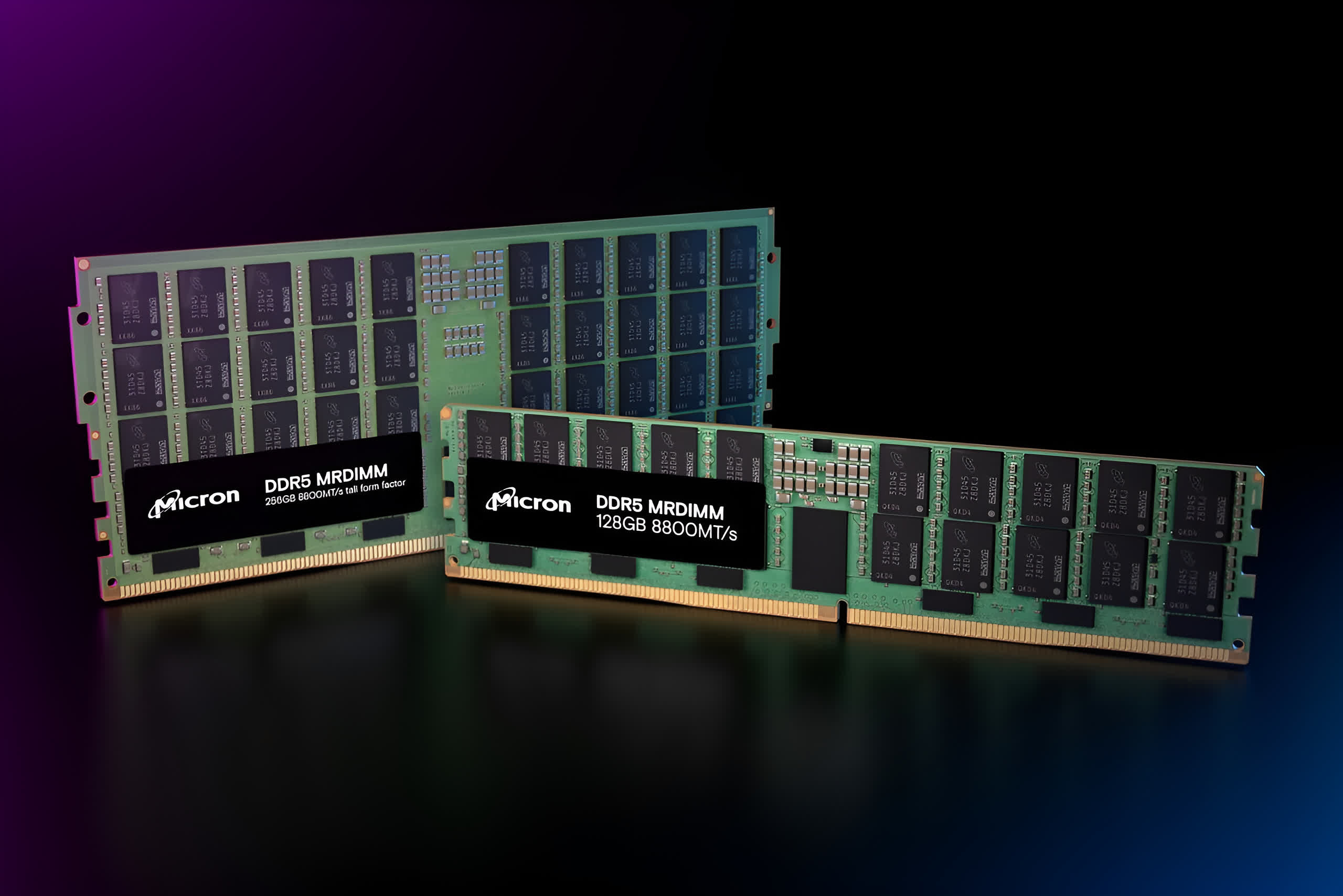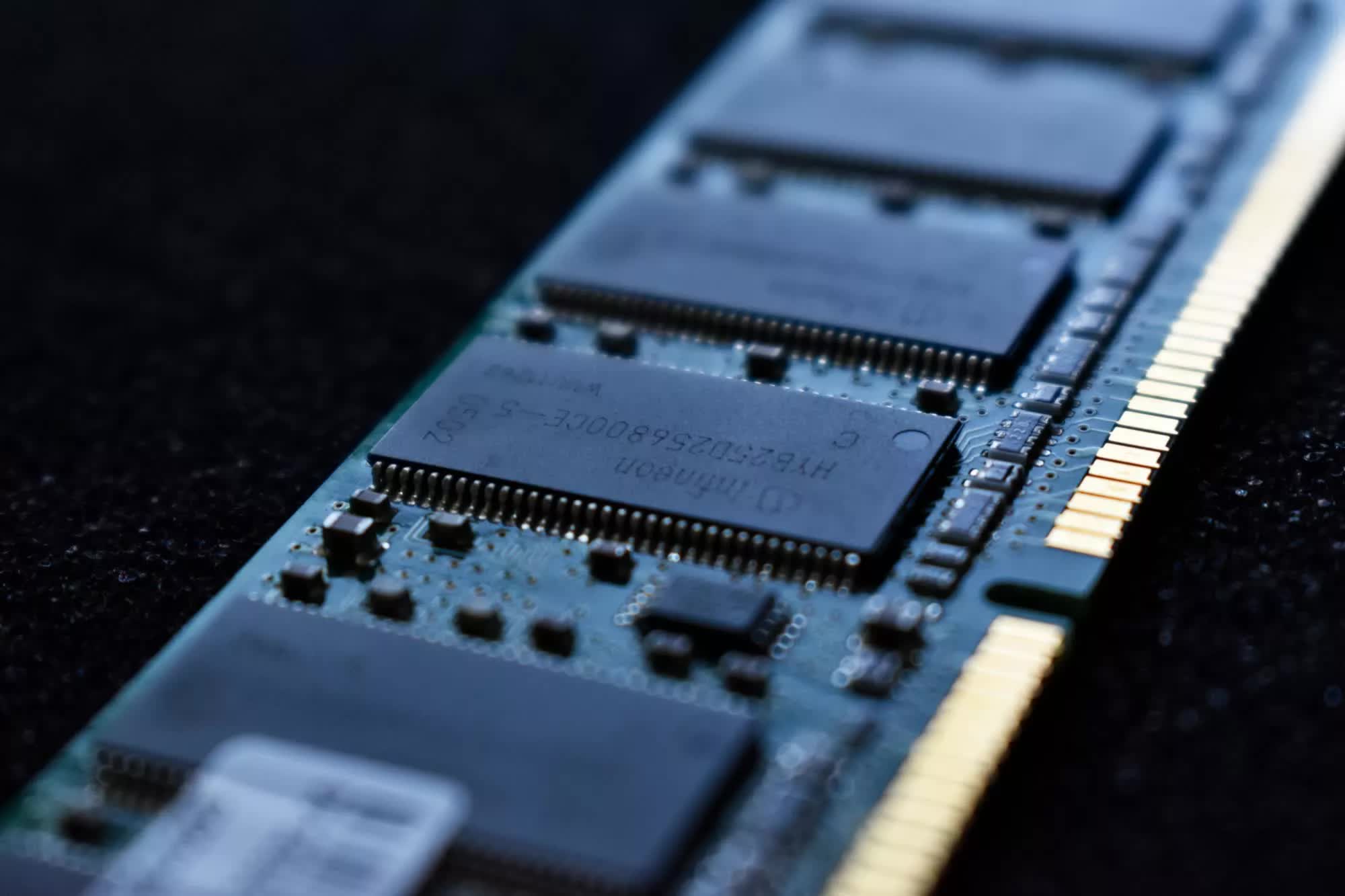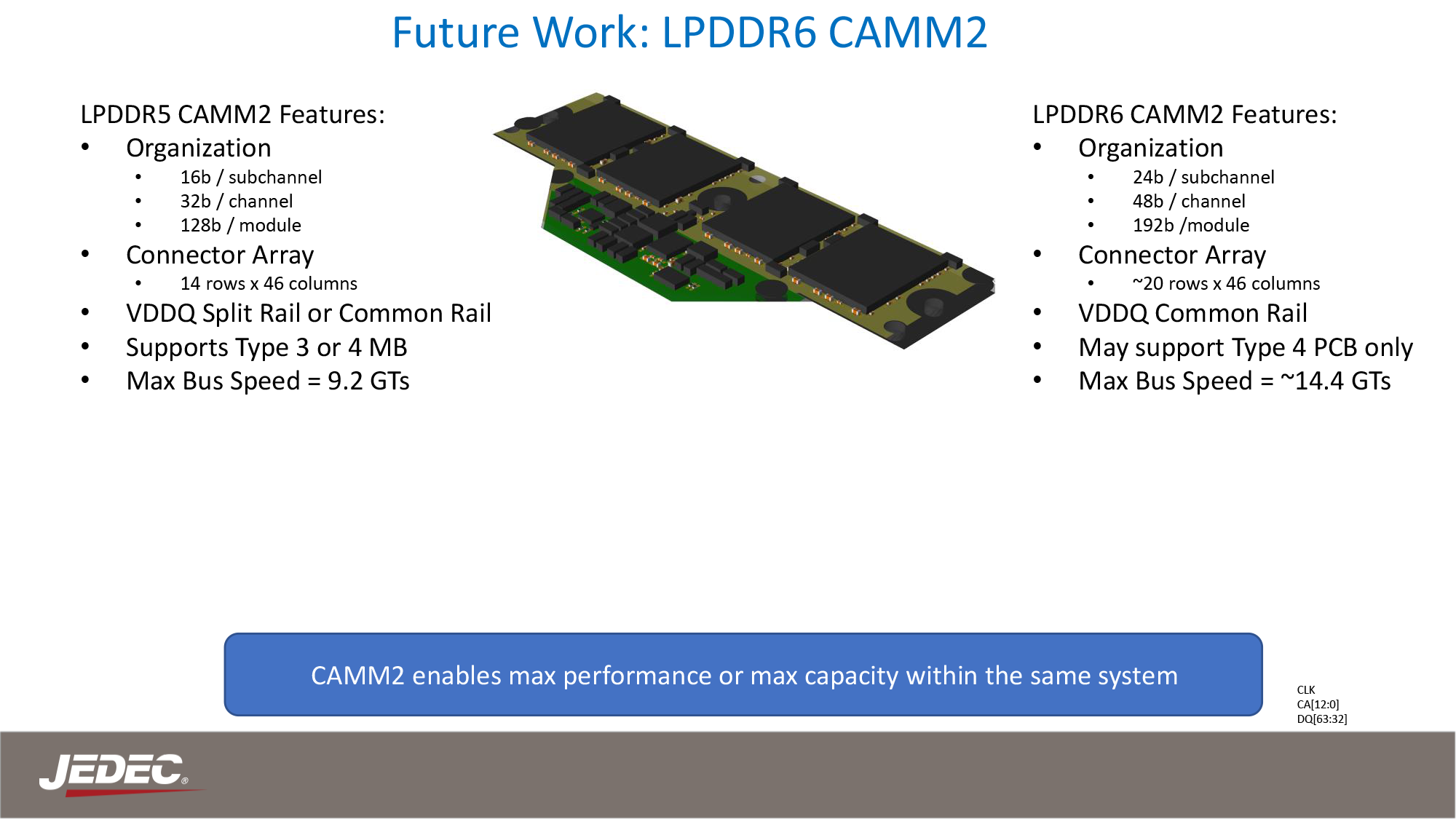TL;DR: JEDEC, the organization that develops open standards for the microelectronics industry, has pulled back the curtain on two new memory module standards that promise to deliver a massive bandwidth boost – the DDR5 Multiplexed Rank Dual Inline Memory Module (MRDIMM) and a next-gen Compression-Attached Memory Module (CAMM) for LPDDR6. These standards could unlock vital bandwidth increases needed to feed increasingly powerful CPUs, GPUs, and AI accelerators over the next few years.

Currently in the works by JEDEC's JC-45 committee, MRDIMM is a new module type that uses multiplexing to combine multiple data signals and transmit them over a single channel, effectively increasing bandwidth without adding more physical pins and traces. The goal is for MRDIMMs to deliver up to double the peak bandwidth of standard DDR5 RDIMM modules.
MRDIMMs will support even higher data rates up to 12.8 Gbps per pin, compared to 6.4 Gbps for current DDR5 RDIMMs. They are being designed for future scalability to allow multi-generational compatibility all the way through the DDR5 roadmap.
Despite the radical increases in bandwidth, MRDIMMs will use the same standard DDR5 DIMM components like DRAM chips, power management, and SPD hubs to maintain compatibility with existing platforms.

JEDEC is also planning a new "Tall MRDIMM" form factor to maximize density. This taller design will enable twice the number of DRAM single-die packages to be mounted on the DIMM without the need for 3DS packaging.
For mobile applications, JEDEC is working in parallel on an updated module design for the LPDDR6 memory type used in smartphones, tablets, and ultra-thin notebooks. Building on the existing JESD318 CAMM2 standard that enabled DDR5 and LPDDR5(X) modules, the new LPDDR6 CAMM design aims to hit transfer speeds greater than 14.4 GT/s. It will also incorporate a 24-bit sub-channel, a 48-bit overall channel width, and a connector array, doubling throughput over LPDDR5 CAMM. The compact design should allow these new modules to be used in thin, thermally-constrained mobile devices without requiring soldered RAM.
Both the DDR5 MRDIMM and LPDDR6 CAMM designs remain works in progress at JEDEC. But once they're out, they'll prove crucial for chips like Nvidia's Blackwell and Rubin GPUs that are on the horizon. They'll pack insane core counts, so these new memory technologies could prove instrumental in alleviating any possible bottlenecks.
JEDEC unveils multiplexed DDR5 modules and LPDDR6 CAMM for massive memory bandwidth boost
